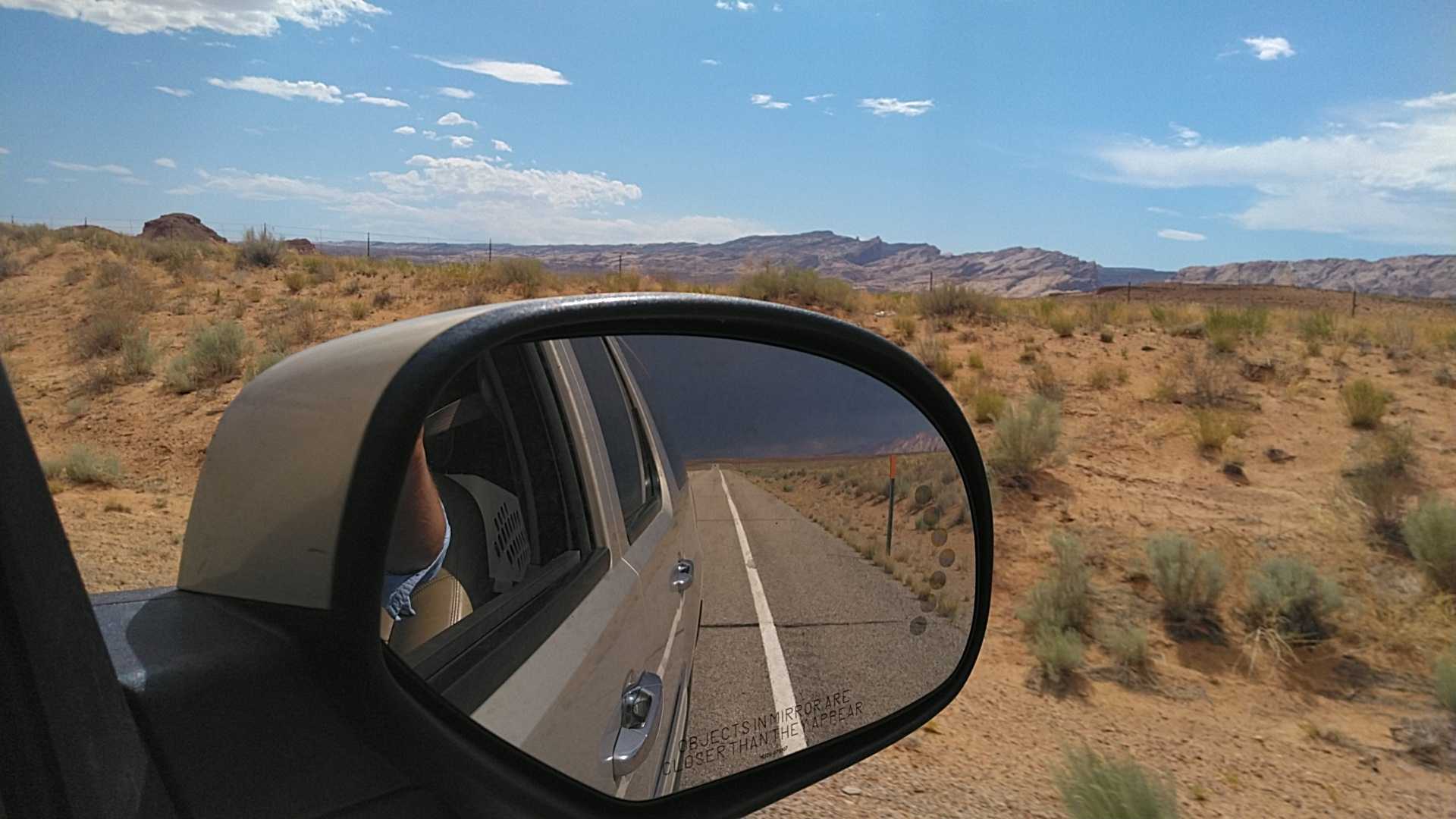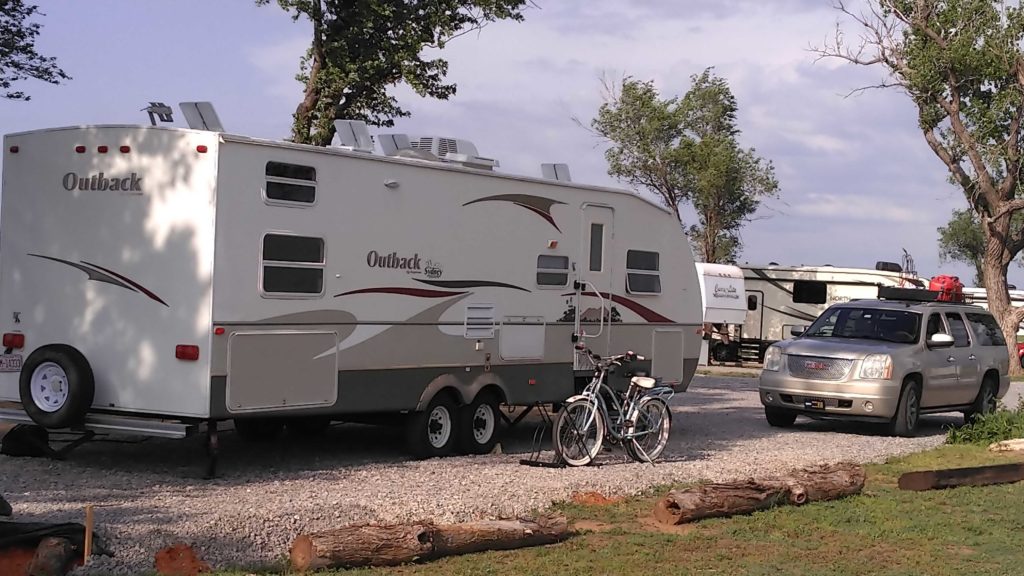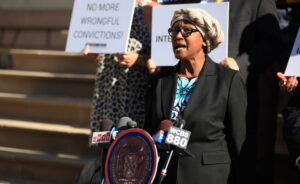
Bullfrog, UT–In late April of 2020, as the pandemic began to ramp up and change the world as we knew it, my wife and I hooked our trusty roadster to a 31′ travel trailer and headed west from Beaufort, North Carolina. We did so unknowingly with a few million other Americans as part of what appears to be becoming “a New Western Expansion”.
Some take issue terming this, “The New Western Expansion”, due to the fact that many of the new arrivals appear to be from California. However, the most recent census figures showing double-digit population growth in Washington, Oregon, Idaho, Colorado, Utah, Arizona, North Dakota, and Texas seem to indicate that the greatest growth areas are in the west. Georgia, Florida, Delaware, and South Carolina also made the list of the top 13 States That Grew the Fastest in the 2020 Census, with an average growth of 11.5%, but their growth seems to pale in comparison to places like Vineyard, Utah that saw 143% growth has grown from 139 people in 2010 to a staggering 20,000 people in 2020, according to Vineyard City Planner, Briam Perrez.
“Where Once There Were Farms, Now There Are Subdivisions”
That’s the way Perrez characterized the growth that got national attention following the release of census figures by the Federal Government in August of 2021. In an interview earlier this week, he admitted that the town had changed substantially, as he stated, “due to an influx of Utah college students who chose to stay local for school rather than leave the way that previous generations did.” He stated that better job prospects and a more attractive social scene lead to the mass migration to the tiny town set on the shores of Utah Lake, just south of Salt Lake City.
Perrez is taking the arrival of the masses in stride, though, saying that while the increase in traffic is not a big deal, the parking situation in the Vineyard Downtown area leaves something to be desired. He also stated that investments in making the town more walkable and expansions of fire and police were in the offing, but otherwise the addition of 20,000 people wasn’t such a big deal.
That was not the tenor of virtually everyone else when asked about this story in Washington, Idaho, and Colorado.
In an interview with Professor Peter Alexander of Port Ludlow, Washington, he says parking is the least of concerns, saying, “The challenge we have here being rural is the fact that we have to have cars because there isn’t any reasonable form of (public) transportation.”
More People, Fewer Cows Means Less Available Housing, Higher Costs
In the wide-open spaces of the western states, that at one time, had more cows than people, the swelling population is met by a lagging governmental response in services and planning to meet the needs of new arrivals from places like California, New York, and Virginia. The increases in population in Washington are leading to increased demand for housing, which is driving up prices. The increases in demand for services for things like schools, police, fire, and medical are causing expanding tax rates. This one-two punch of housing costs and taxes is locking lower-income families out of a short supply market for affordable housing, resulting in a fleet of homeless RV dwellers squatting in every available dark corner of the state.
Professor Alexander says the demand for rural housing on the Olympic Peninsula has skyrocketed forcing lower-income residents out of their homes and onto the streets. “Here in Washington, if you are on a fixed income…what do you do?… Now that a lot of companies are allowing people to stay home, and work 100% from home, the competition for houses here in the rural area is becoming astronomical.”
While the population boom is leading to increases in RV dwellers in Washington, those RVs aren’t as obvious in places like Idaho which is also seeing bloating housing prices. Families that moved to the wilds of Idaho in the previous centuries in covered wagons are losing their homes to new arrivals in moving vans, and they’re none to happy about it.
Eska Goodman says on Facebook, “One of the most wonderful things about Idaho was the scenery of Idaho. The beauty of Idaho… (T) there is nothing beautiful about all the houses and apartments that are everywhere now. I miss the farmland, the hills without houses all over them. I miss quite a beautiful Idaho I grew up in. I don’t blame people for wanting to come here. It is lovely here. I wish they would just come to visit and not live. Idaho is now so expensive that the people who grew up here can’t afford to live here and that is truly heartbreaking.”
Tracy Bailey of Nampa, Idaho echoes her sentiments on Facebook saying, “Totally hate all of the liberals moving in trying to change Idaho. The traffic is unbelievable for our old roadways, the housing boom is eating up our farmland and water table, cost of living is horrible here now & that’s why our homeless population has increased, so many rude disrespectful people now, the crime rate is increasing rapidly, wages are to low for the cost of living here. Sad so many out of staters move here to get away from the life they had where they used to live but then they do everything possible to change Idaho.”
Perhaps the housing prices and increasing taxes wouldn’t be so onerous to the locals if there wasn’t such a sense that the new arrivals are working to change the places they move to. Denise Clair of Port Townsend, Washington, new arrival of sorts who moved from Sarasota, Florida in the Pandemic back to her home state of Washington identifies with both sides of the population boom story, having grown up in Washington state.

“You Build A Housing Development Next to A Farm and then People Start to Complain About The Cow Smell”
Clair says that while farmland is flat and easy to build on, the first thing that new arrivals demand when they move to it is to turn it into the place they just came from. She says, “I have a theory that…Californians are being seeded like dandelions around the country and bringing (that) culture with them. So they are going to alter the environment where they land, no matter where they go.”
While Clair admits she likes the new restaurants and the upgrades to infrastructure that comes with new arrivals to an area, she understands the misgiving that local families have to the new arrivals. “One of the things that I was impressed with down in California, is before they built the homes, they would build the infrastructure. They would put in the roads and the lights and all of that before the houses were allowed to be built. They don’t have that rule here in Washington, and I don’t know what states have that rule. And so, the problem you end up with is that you have three times the population, if not more, all trying to function on the same infrastructure that has been there since I was a kid growing up here. So that to me is one of the biggest drawbacks.”
She continued, “They’re Dorothy looking for Kansas. Because everywhere they go, they have to modify it into their what is their ideal environment.”
Go West Young Man, But Look East
Clare and Alexander agree, that lessons from the East and California are exactly what is needed to keep the peace in this New Western Expansion. Rather than ruin the wilds of Idaho and Utah with suburban sprawl and overdevelopment, planning and community development in the style of Raleigh, NC, and Irvine Ranch, California can offer guidance to the new western communities.
In the late 1980s and 90s, as populations were shifting from the Northeast to states like Georgia, North Carolina, and California, planned communities were developed where high-density living was situated next to industry and transportation to allow families to work and live without long commutes from the suburbs to the city. Planned high-density micro-communities popped up outside Raleigh and Atlanta in the East in Orange County in the West.
“If you could imagine having something like that maybe in Kingston, or Bainbridge or Bremerton,” says Alexander, “where your right near the ferry so that somebody could just live right there and just walk to the ferry. You wouldn’t need a car for that”
Clare agrees to say “We’ve always treasured the environment (in the west)… I was brought up with this reverence for nature.” “The thing is though,” she continues,” that is being so impacted by so many people coming, and a lot of them are coming here because they’re excited to be deeper into nature…(but) it’s like your coming here to enjoy that but by your act of coming here, you’re reducing it.”
Thumbnail Credits: Christopher German
Sources:
- Prof. Peter Alexander of Port Ludlow, WA
- Briam Perrez, City Planer, Vineyard, UT
- Denise Clare of Port Townsend, WA
- Eska Goodman, https://www.facebook.com/groups/452760711594856/permalink/1973985186139060/
- Tracy Bailey of Nampa, Idaho https://www.facebook.com/groups/452760711594856/permalink/1973985186139060/




